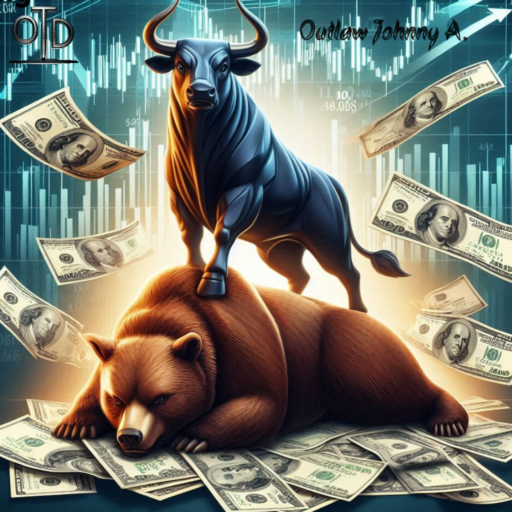In today’s dazzling financial theater, the market staged a brilliant performance—an impromptu rally spurred by the announcement of a 90-day pause in tariffs. One might assume the pause was a harbinger of imminent economic relief. Still, if you squint just a bit, the picture sharpens into one of a classic short-covering rally, a slick maneuver by traders and smart money, all while retail investors clung to the hope that the worst was behind us. Spoiler: nothing has changed.
The Rally That Wasn’t
The immediate market surge might have been mistaken for a sign of renewed economic vigor. However, seasoned observers already suspected this was less of a fundamental turnaround and more of a tactical retreat by short sellers—a textbook example of short covering. Picture a crowded freeway where everyone suddenly brakes because someone else hits the brakes. In this case, the collective jolt wasn’t due to new information about the economy but rather the mechanics of market participants unwinding their positions. The move was less about the pause in tariffs and more about traders seizing the opportunity to cover shorts at a profit while the retail buyer gets taken advantage of, while the underlying uncertainty remains as thick as ever.
Unchanged Uncertainty in a Tariff Pause Mirage
In the world of financial wizardry, a 90-day pause in tariffs can hardly be called a game changer. Despite the fanfare, the core issues have not been addressed—global trade tensions persist, supply chain bottlenecks linger, and political uncertainty remains the name of the game. With 69% of CEOs predicting a recession before the year’s end, the optimism that fueled today’s rally appears decidedly misplaced. These forward-looking executives, who have their fingers on the pulse of the economy, suggest that the winds of change aren’t favoring sustained growth anytime soon. One might wryly comment that if calm were contagious, it would take a lot more than a temporary tariff reprieve to change the forecast.
The Earnings Season Grim Reaper
As we inch closer to the upcoming earnings season, companies that have long enjoyed projecting bullish growth are now likely to adopt a more cautious stance, revising their estimates downward. The initial rally may give the illusion of turning a corner, but as soon as the earnings reports start rolling in, the smart money’s earlier maneuvering might be exposed as mere opportunism—a brief distraction that does little to mask the broader economic malaise. Analysts are already whispering that the favorable readings of today’s market are less a reflection of improved fundamentals and more a temporary, orchestrated dance among the sophisticated traders.
A Sarcastic Salute to Market Jitters
Let’s give credit where it’s due: the market’s reaction is, in its own paradoxical way, a masterclass in modern financial theater. The spectacle of a sudden rally, buoyed by a fleeting policy shift, provided ample fodder for those who relish irony. For every retail investor clinging to the hope that the pause will usher in a new era of prosperity, there’s a Wall Street player pocketing gains by exploiting the very uncertainty that persists. The situation is a reminder that, in the world of finance, sentiment can be as fleeting as the latest headline—exciting in the short term but ultimately lacking substance!
TLDR: Hold Your Horses!
As the curtain falls on today’s rally, the evidence remains clear: this is a case of short covering and tactical profit-taking rather than a revolution in economic policy. Smart money has spoken with a whisper of confidence, while the real uncertainties continue to loom large. So, before you let your enthusiasm overtake your sense of caution, remember that while the market may have momentarily “cooled your jets,” the runway ahead remains fraught with potential turbulence. The prudent investor knows that when it comes to macroeconomic fundamentals, a temporary pause rarely means a full stop to the challenges ahead.

